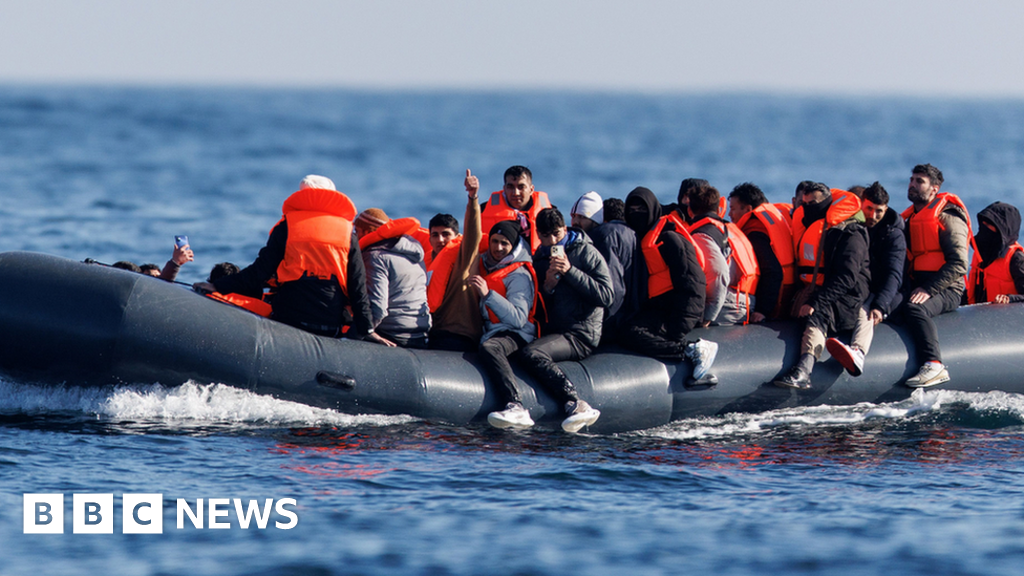:quality(85)/cloudfront-us-east-1.images.arcpublishing.com/infobae/S6CYAWTOH5GMDOGB4HQZSUVMPY.webp)
Like a virus Corona virus What happens Covid-19 diseaseBacteria Tuberculosis is spread from person to person through the air. The thing is The pathogen is released when an infected person in the lungs or throat coughs, sneezes, talks or sings, and becomes infected when someone nearby breathes in the germ.
called bacteria Mycobacterium tuberculosis and has affected humans for at least 9,000 years Today it can be prevented and cured. Last year, 7.5 million people were infected with tuberculosisThe first recorded maximum number World Health Organization (WHO) Global surveillance of the disease began in 1995.
According to the World Health Organization, the increase in the number of reported cases is due to restrictions on access to diagnosis and provision of services in the previous two years, because of the global impact of care for patients. Covid., as explained in the Annual Report on Tuberculosis published in the last few hours.
Although it is a curable infection, deaths still occur. The total number of TB-related deaths (including those with HIV) in 2022 was 1.3 million.compared to 1.4 million in 2021.
India, Indonesia And PhilippinesMore than 60% of the global reductions in the number of newly diagnosed TB cases occurred in 2020 and 2021, with a recovery in 2022 over 2019.
“Inside Latin America And in other parts of the world, cases have surged as they stop being reported due to pandemic interruptions. “Last year the notification situation started to recover,” he opined Infobay Doctor Domingo PalmeroEpidemiologist and pulmonologist specializing in tuberculosis and mycobacterial diseases, Professor of Pulmonology University of Buenos Aires and Head of the Division of Pneumology Muniz Hospital.
“The epidemic had an impact because services to care for tuberculosis patients were closed, and people were restricted in their movement due to incarceration. Also means Overcrowding, less access to health care systems and increased levels of poverty increase the incidence of disease“, said Palmero.
If the immune system can’t stop the TB bacteria from multiplying, they can start multiplying in the body and cause disease. Bacteria attack the body and destroy its tissues; If this happens in the lungs, they can cause a hole there.
What happens if someone has tuberculosis? Tedros Adhanom Ghebreyesus, Director-General of the WHO recalled: “For thousands of years, our ancestors died of tuberculosis without knowing what it was, what caused it, or how to stop it.” Evidence of tuberculosis in humans dates back 9000 years AthletesA city located beneath the Mediterranean Sea off the coast of what is now Israel.
Archaeologists have found traces of the disease in the remains of the buried mother and son. Centers for Disease Control and Prevention (CDC) From America. “We have knowledge and tools today that they could only have dreamed of. We have the political commitment, and we have an opportunity like no other generation in the history of mankind: to write the final chapter in the history of tuberculosis,” the WHO chief highlighted.
All over the world, It is estimated that 10.6 million people will be affected by TB in 2022, up from 10.3 million in 2021. Geographically, during that year, the majority of those who developed the disease in the WHO regions were Southeast Asia (46%), Africa (23%) and the Western Pacific (18%), with a smaller proportion in the Eastern Mediterranean (8.1%). %), America (3.1%) and Europe (2.2%).
During 2020-2022, disruptions due to Covid-19 caused almost half a million deaths from tuberculosis, a pathology established as the leading cause of death among HIV patients.
Also, there is the problem of Multi-drug resistant tuberculosis (MDR-TB), which is “A public health crisis”. This condition is caused, at least in part, by bacteria resistant to isoniazid and rifampin, the two most powerful drugs against the pathogen.
Last year, 410,000 people developed multidrug-resistant or rifampicin-resistant tuberculosis (MDR/RR-TB) and only two in five accessed treatment.
There were advances in disease control, such as rapid molecular diagnostic testing that allowed early and adequate detection. The test was used in only 47% of the 7.5 million new cases of infection in 2022, whereas a year ago it was used in only 38% of cases.
Additionally, by the end of 2022, 40 countries will have started using the new drug system BPaLM/BPaL 6 months to treat those with multidrug-resistant or pre-multidrug-resistant bacteria. Although a total of 92 countries use the 9-month oral regimen for MDR/RR-TB treatment, a similar number was recorded in 2021 and more than 65 in 2020.
Access to short (lasting 1–3 months) rifamycin-based regimens for prophylactic treatment of the disease has increased. In 2022, 0.60 million people in 74 countries received these short treatments, compared to 185,350 in 52 countries in 2021.
For its part, the WHO highlighted that global efforts to combat tuberculosis have saved more than 75 million lives since 2000. But even bigger efforts are needed because by 2022 the disease will be the second leading cause of death. the world
Despite a significant recovery last year, progress was insufficient to meet the global TB targets set for 2018, it said, citing disruptions from the epidemic and ongoing conflicts as key factors.
For example, the net decrease in bacteria-related deaths between 2015 and 2022 is 19%, which “End TB strategy” 75% reduction by 2025 by WHO. Furthermore, the overall decrease in the incidence rate between 2015 and 2022 is 8.7%. A percentage that is far from the target of a 50% drop by 2025.
About 50% of TB patients and their families face direct and indirect medical expenses. They represent more than 20% of total income, far from being the zero target in the anti-TB strategy.
Objectives established in 2018-2022 In the Political Declaration of the First High Level Meeting of United Nations Tuberculosis was not encounteredOnly 84% of the 40 million people receive TB treatment, and only 52% of the 30 million people receive TB preventive treatment. Also, less than half of the funds earmarked for providing services and research into this pathology were raised.

“Introvert. Thinker. Problem solver. Evil beer specialist. Prone to fits of apathy. Social media expert. Award-winning food fanatic.”

:quality(85)/cloudfront-us-east-1.images.arcpublishing.com/infobae/SGCWN7FIQFEZ5KOFSFS3LAQHGU.jpg)


More Stories
The US will force the automobile industry to install an AM radio in every vehicle
5 Simple Exercises to Improve Sex Life for Men and Women
Police evacuated a Columbia University building occupied by students protesting the war in Gaza